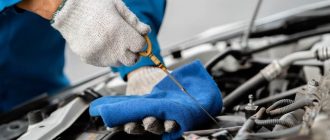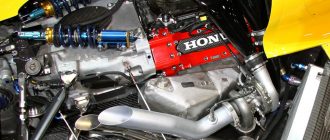What Type of Engines Are in Formula 1 Cars?
Formula 1 cars are powered by highly sophisticated and powerful engines. These engines are designed to produce maximum power and torque while being as lightweight and efficient as possible. The current Formula 1 regulations specify that engines must be:
- 1.6-liter V6 turbocharged
- 90-degree V-angle
- Maximum of 15,000 rpm
- Power output of around 1,000 horsepower
How Do Formula 1 Engines Work?
Formula 1 engines are internal combustion engines, which means that they burn fuel to create power. The fuel is mixed with air and then ignited by a spark plug. The resulting combustion creates pressure, which drives the pistons up and down. The pistons are connected to a crankshaft, which converts the up-and-down motion of the pistons into rotary motion. The crankshaft then drives the car’s wheels.
Formula 1 engines are turbocharged, which means that they use a turbocharger to increase their power output. A turbocharger is a device that uses the exhaust gases from the engine to spin a turbine, which in turn drives a compressor. The compressor forces more air into the engine, which allows the engine to burn more fuel and produce more power.
What Are the Different Parts of a Formula 1 Engine?
Formula 1 engines are made up of a number of different parts, including:
- Cylinder block: The cylinder block is the main structural component of the engine. It houses the cylinders, which are the chambers in which the pistons move up and down.
- Cylinder head: The cylinder head is located at the top of the cylinder block and houses the valves that control the flow of air and fuel into and out of the cylinders.
- Pistons: The pistons are metal discs that move up and down inside the cylinders. They are connected to the crankshaft by connecting rods.
- Crankshaft: The crankshaft is a rotating shaft that converts the up-and-down motion of the pistons into rotary motion.
- Camshaft: The camshaft is a shaft that controls the timing of the valves. It is driven by the crankshaft.
- Turbocharger: The turbocharger is a device that uses the exhaust gases from the engine to spin a turbine, which in turn drives a compressor. The compressor forces more air into the engine, which allows the engine to burn more fuel and produce more power.
How Are Formula 1 Engines Regulated?
Formula 1 engines are heavily regulated by the FIA, the governing body of Formula 1. The regulations are designed to ensure that the engines are safe, fair, and competitive.
Some of the key regulations governing Formula 1 engines include:
- The engines must be 1.6-liter V6 turbocharged.
- The engines must have a 90-degree V-angle.
- The engines must have a maximum of 15,000 rpm.
- The engines must produce a maximum power output of around 1,000 horsepower.
- The engines must be able to run on a variety of fuels, including gasoline, ethanol, and biofuels.
What Are the Future of Formula 1 Engines?
The future of Formula 1 engines is uncertain. The FIA is currently considering a number of changes to the engine regulations, including a switch to hybrid engines or even fully electric engines. It is unclear what the future holds for Formula 1 engines, but it is sure to be an exciting time.




